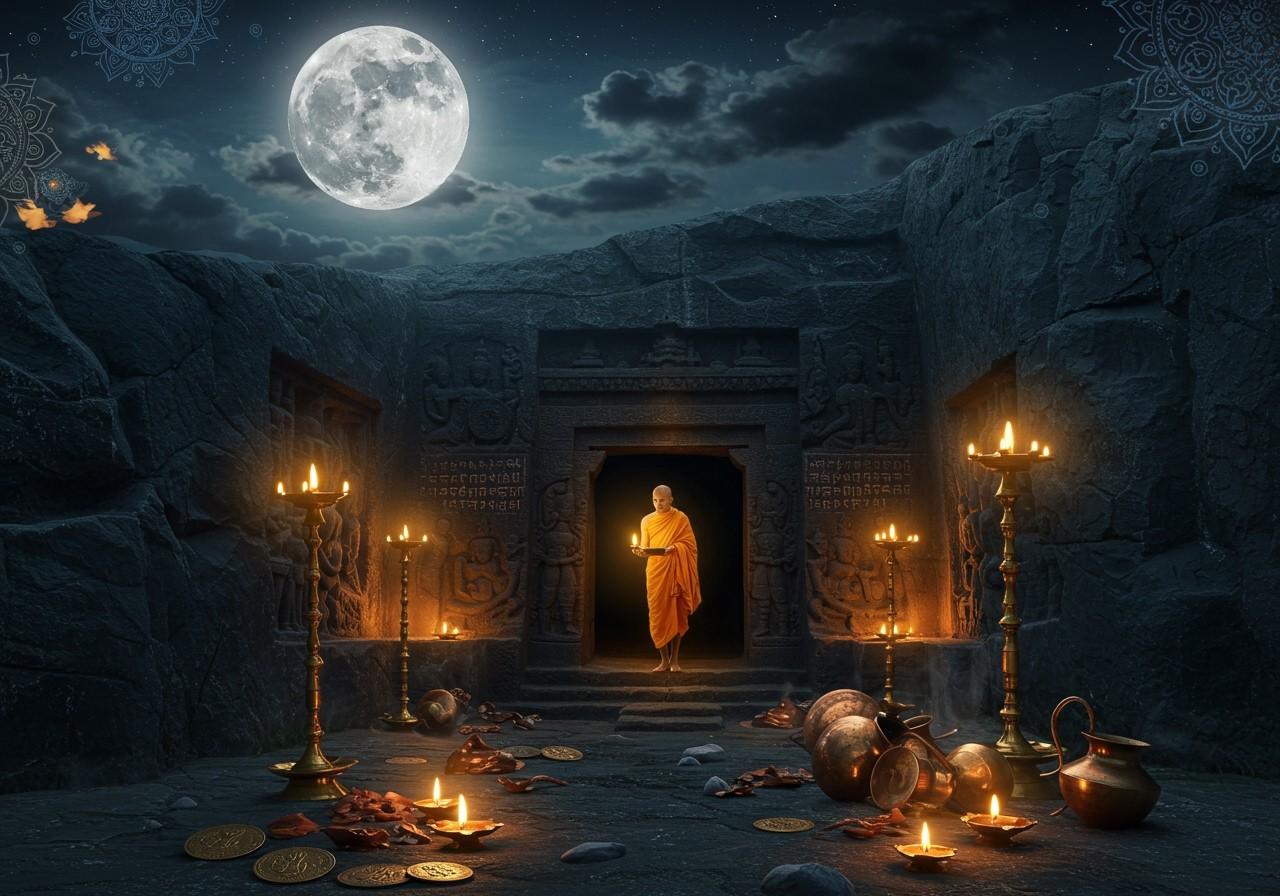
The Barabar Caves, nestled near Gaya in Bihar, India, stand as a testament to the architectural ingenuity of ancient India. Dating back to the 3rd century BCE during the Mauryan Empire, these rock-cut caves offer a captivating glimpse into the spiritual practices and craftsmanship of a bygone era. This article delves into the enigmatic world of the Barabar Caves, exploring their historical context, unique acoustics, and the role of modern technology in unraveling their secrets.
Historical Significance and Origins
The Barabar Caves are intrinsically linked to the reign of Emperor Ashoka and his successors, reflecting the cultural and architectural peak of the Mauryan Empire. Inscriptions discovered within the caves provide invaluable insights into the religious practices and societal norms prevalent during that period. For a deeper dive into the history of ancient temples, explore our blog post on Badami Cave Temples.
- Buddhist and Jain Influences: The caves exhibit influences from both Buddhism and Jainism, underscoring their significance in ancient monastic traditions. These influences are evident in the architectural styles and the inscriptions found within the caves, suggesting a period of religious harmony and exchange.
- Exquisite Craftsmanship: The remarkably precise and smooth rock-cut surfaces of the caves are a testament to the advanced craftsmanship of the Mauryan era, particularly impressive given the absence of modern tools. The polished finish of the interiors is a unique feature, raising questions about the techniques employed by the ancient artisans.
- Strategic Location: The deliberate choice of location for the Barabar Caves likely held both strategic and spiritual importance. The caves’ proximity to trade routes and their serene natural surroundings may have contributed to their significance as both a spiritual retreat and a place of contemplation.
Mysteries of the Barabar Caves
Despite extensive research, several aspects of the Barabar Caves continue to intrigue historians and archaeologists:
- Purpose and Function: Theories regarding the caves’ purpose range from religious sanctuaries for Ajivika monks to royal retreats or spaces for meditation. Emperor Ashoka’s dedication of the Sudama cave to Ajivika monks in 261 BCE provides a key clue to their usage.
- Unique Architectural Features: The highly polished walls and ceilings, unusual for that period, raise questions about the construction methods and the purpose behind such meticulous finishing. The absence of sculptures within most caves, contrasted by intricate inscriptions, further adds to the intrigue.
- Cryptic Inscriptions: The inscriptions found within the caves, primarily in Brahmi script, offer glimpses into the past but leave many questions unanswered. Deciphering these inscriptions is crucial to understanding the history and function of the caves.
- Local Legends: Tales of hidden treasures and supernatural occurrences woven around the Barabar Caves contribute to their mystique, reflecting the local communities’ enduring fascination with these ancient sites. These stories often blend historical fact with folklore, adding a layer of cultural significance.
Barabar Caves Acoustics
The exceptional acoustic properties of the Barabar Caves amplify their enigmatic aura:
- Remarkable Sound Reflections: The smooth, polished surfaces of the cave walls create unique sound reflections and reverberations, a phenomenon that has intrigued researchers for centuries. This acoustic effect may have played a role in religious rituals and chanting.
- Studies and Experiments: Numerous studies and experiments have been conducted to understand the acoustic phenomena within the caves, particularly their impact on chanting and other rituals. These studies aim to decipher the intentional or unintentional nature of these acoustic effects.
- Enhanced Spiritual Experiences: It’s speculated that the acoustics were intentionally designed to heighten spiritual experiences, creating an immersive environment for meditation and religious practices. The reverberations could have intensified the impact of chants and created a sense of otherworldly presence.
Technological Advances: 3D Scanning of Barabar Caves
Modern technology, such as 3D scanning, plays a vital role in uncovering the secrets of the Barabar Caves:
- Benefits of 3D Scanning: 3D scanning enables the creation of highly detailed and accurate models of the caves, both internally and externally. This provides researchers with a comprehensive view, facilitating detailed analysis and preservation efforts.
- Unveiling Hidden Details: 3D scans can reveal previously unnoticed details and features, leading to new discoveries and insights. The high-resolution images allow for close examination of the rock surfaces and inscriptions.
- Process and Challenges: Implementing 3D scanning in these ancient, remote locations presents logistical and technical challenges. Specialized equipment and expertise are required to navigate the delicate environment and capture accurate data.
Poojn.in: Connecting You to India’s Spiritual Heritage
For those seeking to connect with the spiritual essence of the Barabar Caves and similar ancient sites, Poojn.in offers a curated selection of puja items. The Adiyogi Marble Dust Murti (₹379) embodies the spirit of meditation and spiritual awakening, resonating with the contemplative atmosphere of these ancient caves. Additionally, the Tulsi Mala with Radha locket can deepen your connection to ancient Indian spiritual traditions.
Explore our complete collection of authentic puja items at Poojn.in and enhance your spiritual practice with genuine, high-quality materials. We offer convenient online purchasing and delivery across India.
Conclusion
The Barabar Caves stand as an enduring symbol of India’s rich heritage and the remarkable achievements of the Mauryan Empire. Their historical significance, intertwined with the mysteries that shroud them, continues to captivate scholars and visitors alike. The fusion of Buddhist and Jain influences, exceptional craftsmanship, and strategic location underscore the architectural and cultural brilliance of ancient India. The enigmatic inscriptions and unique acoustic properties add layers of intrigue, inviting further research and exploration.
With advancements in technology like 3D scanning, we gain new tools to unveil the secrets of these ancient wonders, ensuring their preservation for generations to come. By delving deeper into the mysteries of the Barabar Caves, we not only honor the legacy of our ancestors but also keep their stories and traditions alive. Whether you are a history enthusiast, a spiritual seeker, or simply curious, the Barabar Caves offer a captivating journey into India’s remarkable past.


